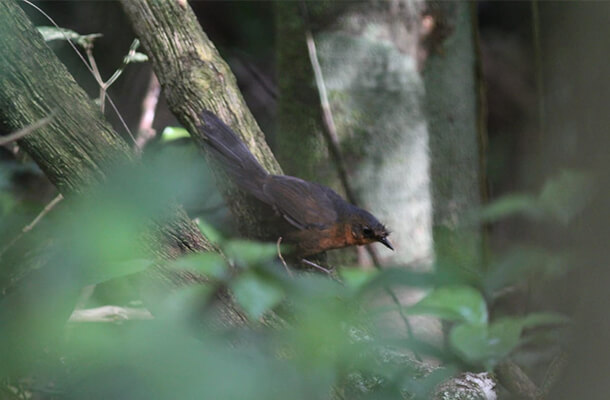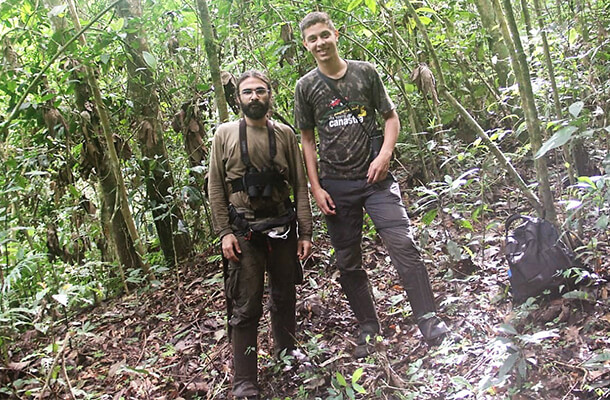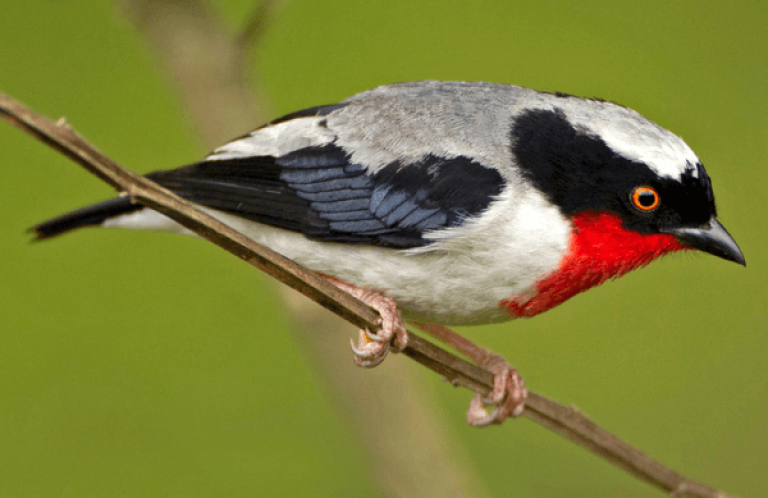“World's Rarest Bird” Sighted in Brazil
Contact: Amy Upgren, American Bird Conservancy, Alliance for Zero Extinction Program Officer, Phone: 540-253-5780 | Email: aupgren@abcbirds.org

Alexander Zaidan of Fundação Biodiversitas photographed this female Stresemann's Bristlefront on Dec. 12, 2018 re-confirming the species' existence. Additional photos and a recording of the bird are available for download; please credit Fundação Biodiversitas when using these files.
(Washington, D.C., December 20, 2018) An individual Stresemann's Bristlefront, one of the world's most endangered birds, was recently observed in Brazil after months of searches had come up empty. Sightings of the female bristlefront on December 12th and 14th in fragments of habitat in Bahia, Brazil, have renewed hope that there is still time to save this remarkable, ground-nesting songbird from extinction. With only one currently known individual, this may well be the world's rarest bird — although researchers do hope to find more individuals in the near future.
American Bird Conservancy (ABC) and its partner organization in Brazil, Fundação Biodiversitas, have been on high alert about the species' population, which numbered as few as 15 in recent years. In a bid to assess the current population, Fundação Biodiversitas, supported by ABC, sent a team this fall to scour the species' remaining habitat, which includes forest within and outside of the Mata do Passarinho, or “Songbird Forest,” Reserve. After several unsuccessful searches, the female bristlefront was seen outside the reserve's boundaries by Alexander Zaidan of Fundação Biodiversitas and researcher Marcos Rezende Peres. The team also obtained a recording of the bird.
Notoriously difficult to detect, the Stresemann's Bristlefront has gone missing previously. It had been undetected for more than 50 years when it was rediscovered in 1995, also in the Brazilian state of Bahia. In 2007, Fundação Biodiversitas, with support from ABC and other organizations, established the Mata do Passarinho Reserve to safeguard habitat for this and other rare species, such as the Banded Cotinga. The reserve preserves an important fragment of Atlantic Forest — one of the most threatened biomes in the world, with less than 10 percent of its original habitat remaining.
Many details of this bird's life history remain a mystery, but before these details can be studied, the species' drop toward extinction must be halted. For now, the best chance at saving this species is to protect its remaining habitat.
With a dangerously small population, even slight disturbances could have major impacts on this species, as recent events have illustrated. Over the last five years, this region of northeastern Brazil has suffered an unprecedented drought so severe that it dried up the reserve's streams. In 2016, fires spread into the reserve, damaging important habitat. Reserve staff report that they saw bristlefronts after the fires, but additional searches in 2017 failed to detect the birds within or near the reserve.
“Although we are relieved that the Stresemann's Bristlefront continues to survive, the species' future remains precarious,” said Amy Upgren, Alliance for Zero Extinction (AZE) Program Officer at ABC. “Much more work needs to be done to locate additional individuals and protect additional habitat.”
“Conservationists have recovered a number of bird species from tiny populations, including the Seychelles Magpie-Robin, Whooping Crane, and Lear's Macaw. We are hopeful that if we can find more birds and take significant action quickly, this bristlefront population can also grow,” said Gláucia Drummond, Executive Director of Fundação Biodiversitas.
“ABC and our partners across the hemisphere are working hard to conserve this and other bird species on the brink of extinction, and to make sure other species don't decline to such dangerously low population levels,” said Daniel Lebbin, ABC Vice President of Threatened Species.
Searches are continuing in hopes of locating other bristlefronts, including the female's mate. ABC and partners are also creating an emergency action plan to protect more habitat. To support these efforts, please contact Amy Upgren.
Work to conserve this area and species is supported by a Global Environment Facility (GEF)-funded project, in partnership with UN Environment and BirdLife International, American Bird Conservancy, and Fundação Biodiversitas , as well as David and Patricia Davidson.
###
American Bird Conservancy is a non-profit organization dedicated to conserving birds and their habitats throughout the Americas. With an emphasis on achieving results and working in partnership, we take on the greatest problems facing birds today, innovating and building on rapid advancements in science to halt extinctions, protect habitats, eliminate threats, and build capacity for bird conservation. Find us on abcbirds.org, Facebook, Instagram, and Twitter (@ABCbirds).
Fundação Biodiversitas' mission is the conservation of Brazilian biodiversity. A nongovernmental organization based in Belo Horizonte, Biodiversitas has promoted science-based conservation in Brazil since 1989 and acts as a reference center for the collection and application of scientific knowledge.



















































